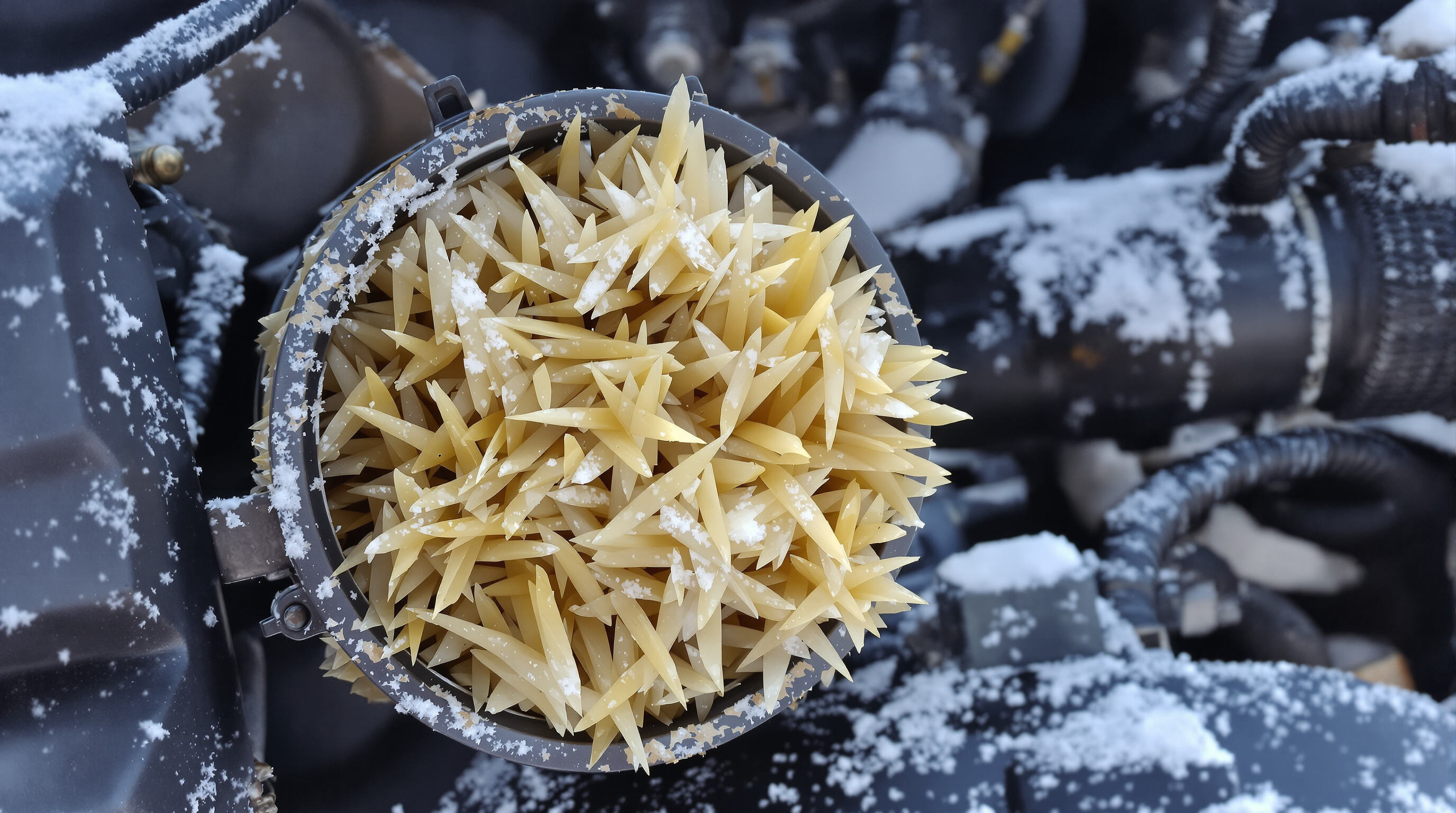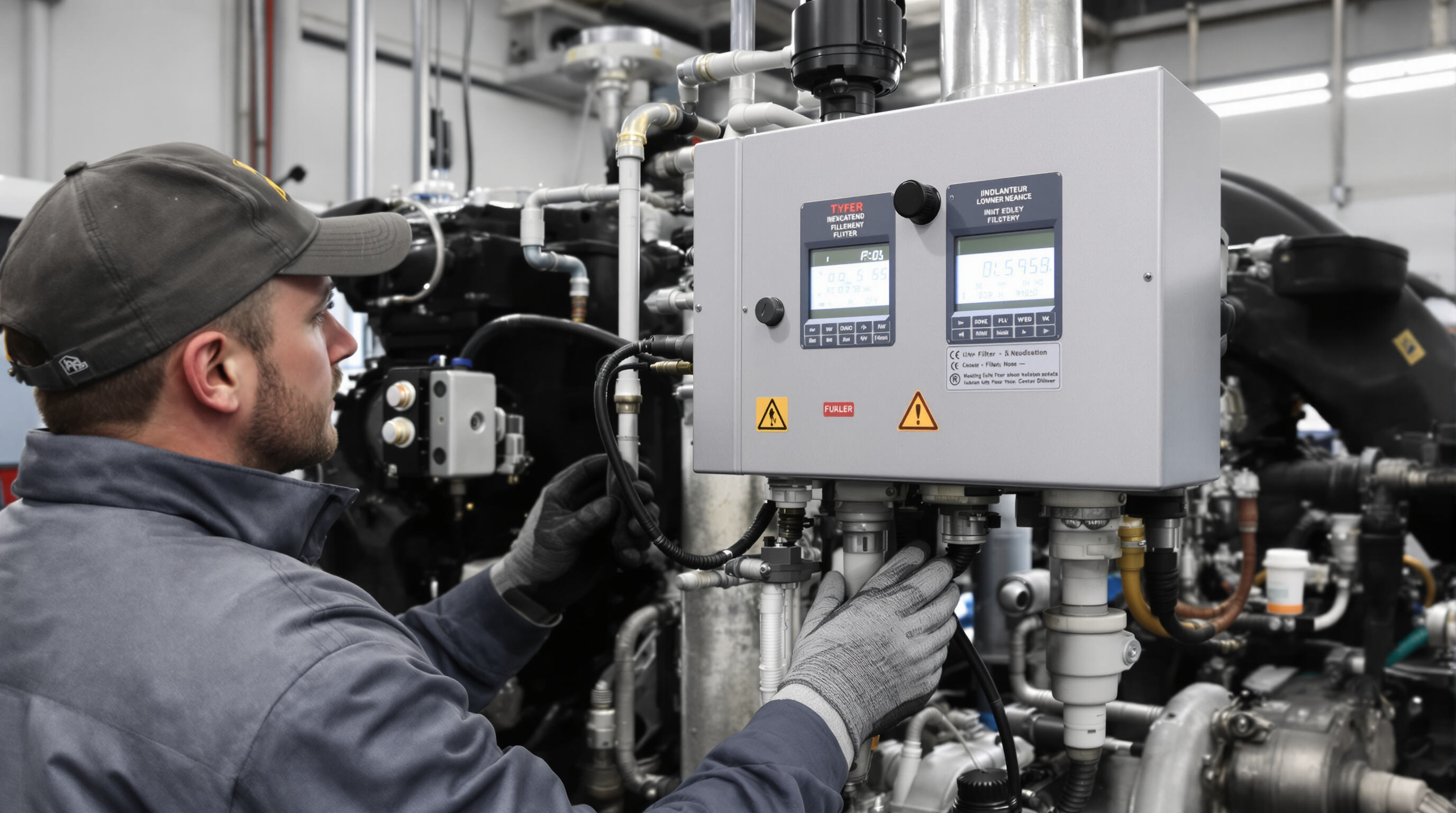How Diesel Fuel Filters Impact Cold-Start Performance
How Diesel Fuel Filters Support Cold Start Performance of Diesel Engines
Good diesel fuel filters make all the difference when starting engines in cold weather. They keep the fuel clean and flowing properly through the system right from ignition. When temps drop below freezing point, the fuel gets thicker and stuff like water vapor plus tiny bits of dirt start messing with how well the engine burns fuel. The latest generation filters catch about 98 percent of anything bigger than 4 microns across their layered filtering material according to recent tests. These advanced designs stop injectors from getting plugged up while making sure fuel sprays out correctly into the combustion chamber. Cold weather drivers notice this works wonders too since it cuts down on those frustrating long cranks at startup times by roughly 40% when temps hit minus seven degrees Celsius or colder compared to older systems that don't filter as effectively.
The Impact of Low Temperatures on Diesel Fuel Filter Efficiency
When temperatures drop, wax starts to crystallize in diesel fuel much faster than people realize. At around minus fifteen degrees Celsius, the resistance through filter media can jump by as much as three hundred percent. The standard paper filters we commonly see start losing between twenty five to thirty five percent of their filtering capacity when it freezes outside because all those paraffin deposits just keep piling up inside them. That makes the fuel pumps struggle quite a bit. What happens next? Longer cranking times when starting engines, fuel that doesn't burn completely, and extra wear and tear on those transfer pumps over time. Most folks think their batteries are dying when they have trouble starting vehicles in winter, but according to industry data, roughly eight out of ten cold start problems in diesel truck fleets actually come down to blocked fuel flow rather than battery issues.
Role of Filtration Media in Managing Wax Crystal Formation in Diesel Fuel
The latest synthetic media equipped with hydrophilic coatings works against wax crystal formation while still letting fuel flow through without restriction. This innovation brings down the Cold Filter Plugging Point (CFPP) by around 8 to 12 degrees Celsius when compared with standard filtration systems. These multi-density media stacks are designed so that bigger crystals get trapped in the outer layers, while those tiny particles below 10 microns find their way into the finer inner layers. And this matters quite a bit since even something as small as 1 milligram per liter of crystalline contaminants can actually cut an injector's life short by about 200 operating hours. What makes these filters stand out is their ability to keep pressure differences below 4 psi at temperatures as low as minus 20 degrees Celsius, which means no fuel starvation problems for vehicles sitting idle for long periods in freezing weather conditions.
Diesel Fuel Gelling and Filter Clogging in Cold Weather

Wax Crystal Formation in Diesel Fuel and Its Effect on Diesel Fuel Filter Operation
When paraffin wax gets cold in diesel fuel it starts to harden once temperatures drop below what's called the cloud point range which is usually somewhere between minus five degrees Celsius and plus five degrees Celsius. What happens next is pretty problematic because the wax forms those sharp needle shaped crystals that get stuck inside fuel filters. According to some recent studies from 2023 about fuel stability, these crystal buildups can actually cut down fuel flow through filters by as much as sixty two percent when temps hit negative fifteen degrees Celsius. The good news though is modern day diesel filters have improved quite a bit. They now incorporate multiple layers of synthetic material designed specifically to catch those pesky wax particles without completely blocking fuel flow. Most quality filters will keep around ninety percent or better flow rate even as temperatures approach the Cold Filter Plugging Point specification.
Fuel Filter Clogging Due to Cold Weather: Causes and Early Warning Signs
Key indicators of cold-weather filter clogging include:
- Pressure drop spikes exceeding 4.5 psi (often flagged by dashboard warnings)
- Engine power fluctuations during acceleration
- Extended cranking times (>5 seconds) on cold starts
Industry analyses show 73% of winter-related clogs occur after temperature drops exceeding 10°C within 24 hours, underscoring the need for proactive monitoring.
Correlation Between Freezing Temperatures and Engine Performance
Below -7°C, rising fuel viscosity significantly impacts engine output:
| Temperature Range | Fuel Viscosity Increase | Power Loss |
|---|---|---|
| 0°C to -10°C | 30-45% | 8-12% |
| -10°C to -20°C | 70-90% | 18-25% |
This increased resistance forces fuel pumps to work 20% harder, accelerating wear on injection components.
Are Standard Diesel Fuel Filters Sufficient Below -10°C?
Most standard filters certified under ISO 16332 standards tend to hit their Cold Filter Plugging Point (CFPP) limit somewhere around minus 12 degrees Celsius. When temps drop to about minus 15 degrees, these regular filters lose roughly between 40 to 60 percent of their ability to hold wax compared with specialized winter models that incorporate heating components or advanced nanofiber materials. For those working in really harsh environments, it's generally wise to go with filters that have ratings at least ten degrees lower than what's expected as the lowest temperature. This extra buffer helps compensate for things like wind chill factors and elevation changes which can significantly impact actual operating conditions in the field.
Technological Innovations in Diesel Fuel Filters for Cold Climates

Heated Diesel Fuel Filters and Their Role in Preventing Fuel Gelling in Cold Weather
Diesel fuel filters that come with heating capabilities work by either using built-in electrical components or running engine coolant through them to keep the fuel warm enough so it doesn't freeze up. The goal is to keep things above those wax crystal formation points around minus ten to twenty degrees Celsius, which helps melt out those pesky paraffin deposits before they actually clog up the system. According to testing done in actual field conditions, these heated systems cut down on cold start problems by roughly two thirds when compared with regular non-heated filters. There's a tradeoff though. When temperatures drop really low, say around minus thirty degrees, these heated systems end up using about fifteen to twenty five percent more power than their standard counterparts.
Smart Filtration Systems With Cold-Weather Sensors and Feedback Loops
Modern filters now include microclimate sensors that monitor real-time fuel viscosity and particulate levels. When paired with predictive algorithms, these systems adjust recirculation rates and preheat cycles automatically. A 2024 study on cold-flow optimization strategies found sensor-equipped filters maintain 98% flow efficiency at −25°C by dynamically responding to temperature shifts.
Integration of Nanofiber Media in Diesel Fuel Filters for Improved Cold Flow
Nanofiber layers with fiber diameters between 200 and 400 nanometers manage to trap nearly all wax crystals smaller than 5 microns, around 99.95% actually, while still allowing for 23% less resistance when fluids flow through them even in freezing temperatures. A recent study published in 2023 looked at these advanced filters in action across several Arctic mining sites and found that they reduced clogging problems by almost half compared to traditional systems. What makes this work so well is the incredibly tight pore structure which stops ice crystals from forming inside the filters. This means maintenance crews don't have to replace filters as often during winter months, sometimes stretching service intervals by anywhere from three hundred to five hundred extra hours depending on conditions.
Optimizing Diesel Engine Performance Through Filter Maintenance and Strategy
Preventive Replacement Schedules for Diesel Fuel Filters in Cold Climates
Cold environments accelerate contamination buildup, with flow restriction occurring 32% faster at -10°C than in temperate conditions (Ponemon 2023). Manufacturers recommend shortening replacement intervals by 25–40% in sub-freezing climates and using filters with <5-micron ratings to effectively capture ice and paraffin particles.
Synergy Between Fuel Additives and Diesel Fuel Filter Longevity in Winter
Anti-gel additives reduce wax crystal formation by 74% when temperatures drop below -12°C, but their performance depends on filter media compatibility. Studies show cellulose-synthetic blend filters maintain 91% flow efficiency with ASTM D975-compliant additives, compared to 63% for standard cellulose filters.
Combining Cold-Weather-Rated Filters With Engine Pre-Heating Systems
Pairing fuel line heaters with nanofiber-coated filters eliminates 98% of cold-start hesitation, addressing both high viscosity and microscopic contamination. This dual strategy enables a 19% faster ignition sequence at -25°C.
Case Study: Filter Performance in Arctic Delivery Fleets During Winter Months
A 15-month evaluation of Arctic logistics vehicles revealed optimized filter maintenance reduced cold-related engine failures by 83%. Key results included:
| Metric | Standard Filters | Winter-Optimized Filters |
|---|---|---|
| Avg. Starts Below -20°C | 2.7 seconds | 1.9 seconds |
| Filter Clogging Events | 47/month | 9/month |
| Fuel Efficiency | 6.2 MPG | 6.8 MPG |
FAQ Section
Why do diesel engines experience cold start problems?
Cold start problems in diesel engines often occur due to thickened fuel and crystallized wax clogging fuel filters, which obstructs fuel flow and combustion efficiency.
How do modern diesel fuel filters help prevent cold start issues?
Modern diesel fuel filters with advanced synthetic media and heating capabilities minimize wax crystal formation and ensure consistent fuel flow even in freezing temperatures.
What is the Cold Filter Plugging Point (CFPP)?
The Cold Filter Plugging Point (CFPP) refers to the temperature at which wax crystals begin to clog a fuel filter, thereby obstructing fuel flow.
Are standard diesel filters effective for sub-zero temperatures?
Standard diesel filters may lose efficiency in extreme cold, but winter-optimized filters with advanced technology help maintain better performance in harsh environments.

